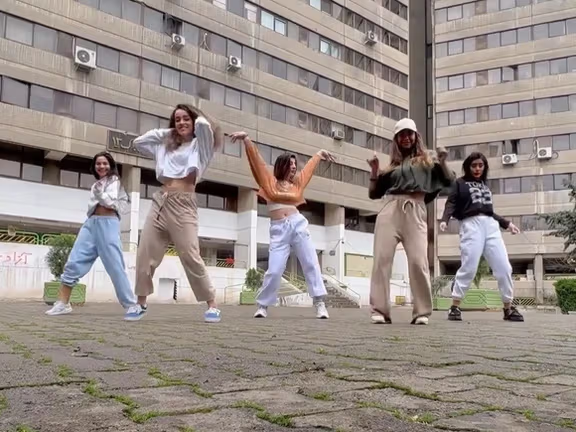Dancing Is The New Protest In Iran

The Islamic Republic has always frowned upon dance but recently even a simple choreographed or ‘synchronized movement’ – as the regime calls it – has become an act of protest.

The Islamic Republic has always frowned upon dance but recently even a simple choreographed or ‘synchronized movement’ – as the regime calls it – has become an act of protest.
Last week on International Women’s Day, a 40-second video of five young women in loose clothing and without the mandatory headscarf dancing in Tehran’s Ekbatan neighborhood to the song “Calm Down” by Selena Gomez and Nigerian singer Rema went viral, prompting the regime’s security forces to start a hunt for the teen girls.
The video was published on Instagram by the trainer of the troupe, who was the first victim to be identified and forced to remove the video and deactivate her page. The following day, Shahrak Ekbatan Twitter account, which covers news about the neighborhood, warned that police were looking for the teenagers. The neighborhood has been an epicenter of ongoing protests ignited by the death of Mahsa Amini, the 22-year-old woman who died in September 2022 while in police custody following her arrest for not wearing her headscarf “properly.”
"They looked for CCTV footage of Block 13 [apartment building] to identify the girls who were only dancing and were not involved in any political activity. Police were seen checking the footage and questioning the guards," it said.
The account later reported that the five girls were initially summoned and received a warning, and later, called in again and detained for two days before being pressured into making a video of forced confessions and expressing remorse.

After news of the manhunt for the teenagers broke out, people from Iran and other countries started releasing videos of themselves dancing to the same tune to express solidarity and support for the Iranian girls.
Prominent Iranian human rights defender and currently a political prisoner, Narges Mohammadi, republished the video of the dance on social media on Tuesday, saying women's singing and dancing is a form of feminine presence in the streets. This is a right which should not be suppressed, she noted. Earlier in the week, actor-cum-activist Golshifteh Farahani also published the video of the dance, with the caption, "Nothing can stop the freedom of Iranian women. Nothing can stop the freedom of all human beings."
The simple act of dancing on streets is construed as “defiance” against the Islamic Republic, so are many other simple things in Iran since the regime tends to label anything it deems “critical” or “improper” as a security threat.
The five teenagers are not the only victims of the Islamic Republic’s opposition to dancing and singing. Islamic laws in Iran forbid dancing, although many people dance during family gatherings in their homes. Even using the word “dance” is forbidden in all media platforms and publications in all sorts in Iran. A state-TV host was banned in 2021 after a guest on her program mentioned the word “dancing.” Several Iranian university professors were sacked late in 2022 over participating in the graduation ceremony of their students because some people danced in the celebrations. And most recently, a court sentenced two bloggers to ten and a half years in prison each for dancing in the streets. They were charged with “encouraging corruption and public prostitution”.
The Academy of Persian Language and Literature, the regulatory body for the Persian language currently led by hardliner politician Gholam-Ali Haddad-Adel, has proposed the word “synchronized movements” as a replacement for “dance” in all the literature published in Iran. Ironically, the regime is also against any synchronized movement by the people as it views any form of popular unity as an existential threat.
However, people in Iran are in sync more than ever to defy the regime. Iranians inside and outside the country keep singing the Grammy Award-winning protest song “Baraye” in their rallies and events. Shervin Hajipour’s revolution song, which is composed of a collection of tweets by Iranians bemoaning the situation in their country and has become the unofficial anthem of the women-led uprising in Iran, opens with “For dancing in the streets.”
In the past six months, many parts of Iran witnessed the largest protests since the 1979 revolution. More than 520 people have been killed.
